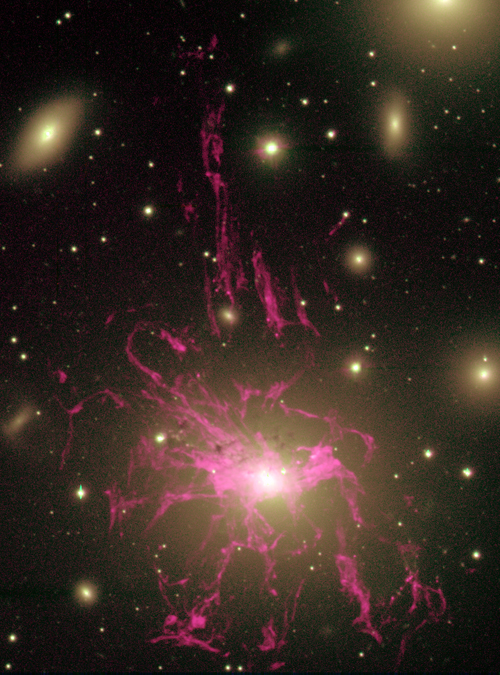Zeuzzz
Banned
- Joined
- Dec 26, 2007
- Messages
- 5,211
Like on PhysicsForums? (no wait, you've banned there, haven't you, for violating their rules....) or BAUT? (you haven't been banned there too, have you?)
Yeah, for posting a video about plasma cosmology! That was amazingly stupid reason, and I've never posted anything at baut. Why talk about this anyway? not really progressing the subject at hand is it? (how many times have i said this!?!?!?)
Even though some alternative energy sources have been considered on other stars,
They have?
I mean, other than as shown on crackpot websites (like thunderblots), or when you googled, added 1 and 1 and got 58723408935?
Yes, they have! Like in the publications I listed that propose the unipolar inductor electrical star model for white dwarfs as the source of their energy. And others. Can you actually see my posts?
heres one, and there are more; http://www.blackwell-synergy.com/doi/abs/10.1046/j.1365-8711.2002.05190.x
Way to spin, Zeuzzz, way to spin!
No, dude, I meant what research have you actually done?
Like what hypotheses have you formulated? What models have you made? What phenomenology have you derived from those models?
(emphasis added)
I keep telling you, I'm not a scientist! I dont form my own hypothesis! I just read what i can with an open mind, and try to deduce what models are best. And my "research" (if you really want to call it that) has shown that the electrical interpretation is a valid contendor to the nuclear one.
What is this "the electric star interpretaion" [sic]? Where has it been published?
And what are these models? Where have they been published?
In the various journals they are published in. Check out Alfvens heliospheric current circuit for a start, or some of the other more recent proposals based on essentially the same idea (ref, ref). Does that search function on your browser work?
What were the steps you took to conclude "better explained" and "seem to be exactly"?
The exact reasons I listed in this post, of being able to explain many stars that are a complete enigma to the nuclear model.
Observations of stars that seemingly disprove current nuclear theories seem interesting. And these events are better explained with the electric star interpretaion of the hertzsprung russell diagram, which has the distinct advantage in that it can explain many stars apparent sudden evolution, as electric stars may move suddenly anywhere on the main sequence if their electrical environment is disturbed. The nuclear model of stars says that it should take millions of years for stars to evolve through their various stages. Observationally, there are many examples of sudden changes in stellar spectral type and luminosity, which contradicts the standard model and supports the electrical model. Like star FG Sagittae which has changed from blue to yellow since 1955, the time of a human lifetime! Another is V838 Mon "It is a unique object in the sense that for this star we have direct evidence of stellar evolution but in a time scale comparable with the human lifetime." Its Shown here in picture of day; "V838 Mon was discovered to be in outburst in January of this year. Initially thought to be a familiar type of classical nova, astronomers quickly realized that instead, V838 Mon may be a totally new addition to the astronomical zoo. Observations indicate that the erupting star transformed itself over a period of months from a small under-luminous star a little hotter than the Sun, to a highly-luminous, cool supergiant star undergoing rapid and complex brightness changes. The transformation defies the conventional understanding of stellar life cycles."
And there are many more variable stars like this that are extremely hard to explain with traditional nuclear models, and seem to be exactly what you would expect from Alfvens star model and his supernova model. You can see many of them here; http://www.aavso.org/vstar/vsots/
Also, It has been found that the broadening of spectral lines in an electric field, which is known as the "Stark effect," increases for hotter stars. This strongly supports an electrical interpretation of the H–R diagram, in which as the current density on the stars surface increases, the discharge becomes hotter, changes color (from red, toward blue), and gets brighter. The more significant is this relationship, the more closely will the plot approach a straight line, stars do not all fall precisely on a line, but have some dispersion above and below the line due to their variation in size. Its probably also worth noting that Eddington himself also acknowledged, "If there is no other way out we may have to suppose that bright line spectra in the stars are produced by electric discharges similar to those producing bright line spectra in a vacuum tube..."
Maybe there?
Or is this going to be something else you ignore?
Last edited:


